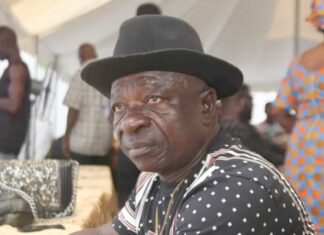So what next after Postmodernism (PM)? Are things getting more complex or simpler?
PM had continued from the mid 20th century, and into the 21st-century, as a dominant cultural force since after modernism, within the literary enclave of arts, literature, culture, music, continental philosophy (of western culture, of course), architecture, etc. However, just before the turn of the 21st-century, a new critical theory began to emerge in art, in literature, philosophy, and even in architecture and popular culture. This new critical theory or thoughts seeking for a name and finding none, takes the easy way out by different proponents choosing labels that directly declared their interests, and such interests being of the nature of an attack on the prevalent literary movement, Postmodernism, by labeling their new theory: Post -postmodernism, Trans- modernism, Metamodernity, etc.
As the 20th century wounds to a close, there began a general feeling that the time of PM had passed. New thoughts began to emerge concurrently with uniform rejection of the principles of Postmodernism or lack of them. However, the challenge became what to label this new theoretical thought, idea or era succeeding Postmodernism. New reactions emerged with a unity of thought in the determination by the proponents to include in fiction, certain missing codes in PM, such as sincerity, dialogue, faith, trust, etc., and these became some of the qualities that rose to challenge postmodern irony or Postmodernism. We know that postmodernism was partly rejected because of its irony, rejection of absolutes which amounts to insincerity, etc., but since the late 1990s, both popular culture and the academia began to exhibit some degree of restlessness about its concepts or none of it.
In 1995, landscape architect and urban planner, Tom Turner, wrote a book that challenges postmodernism stance of “anything goes” and reveals or brings to the open the gradual dawning in architecture of a post-postmodern era that “seeks to temper reason with faith.”
In 1999, Russian American literary scholar with interest in cultural and literary theory, Mikhail Epstein, propounded what he called “trans-postmodernism.” He made an observation that PM would soon become “…conventional and provide the foundation for a new, non-ironic kind of poetry.”
Epstein dubs this new “non-ironic kind of poetry” trans-modernism. If “post” signals the demise of such concepts of modernity such as primary origin, originality, soul, subjectivity, objectivity, truth, and such like concepts, “trans” on the other hand signals the rebirth of these old concepts using the prefix “trans,” for example, “trans-idealism,” “trans-objectivity,” and so forth.
In the year 2000, the American cultural theorist, Eric Gans, used the term post-millennialism to describe the era after PM, and in his evaluation of PM, observes that the era is marked by “victimary thinking”; a victimary politics that is productive in its capitalist resentment and liberal democracy. Gans believes that both capitalism and liberal democracy are productive in global reconciliation. To Gans, Postmodernism promotes global resentment against capitalism and liberal democracy. He therefore began to develop what he called, “post millennialism” as the label for the era that succeeds postmodernism.
British scholar, Alan Kirby, published in 2006 a paper titled, “Death of Postmodernism and Beyond,” his own label for the period after Postmodernism. He calls it “pseudo-Modernism.” He cites mobile phones, interactive TV, Internet, etc. as some of the tools which bring about a kind of shallowness which results in instant and direct and superficial participation in culture. He enumerates the activities of the internet and phone use as the make-up of pseudo modernism. The state of pseudo-modernism is enumerated by Kirby as: ignorance, state of anxiety, and fanaticism. He sees no aesthetically valuable work coming out of pseudo-modernism since it is made up of reality TV, Wikipedia, talk shows, etc.
In his 2009 book titled “Digimodernism,” Kirby looks at How New Technologies Dismantle the Postmodern and Refigure our Culture.
In 2010, cultural theorists, Timotheus Vermeulen and Robin van der Akker, in their article, “Notes on Meta-Modernism,” a new term or label for the era that succeeds postmodernism, as an intervention in the post post-postmodernism debate. They call it Meta-Modernism. According to them, meta-modern sensibility should include “informed naivety”, “pragmatic idealism,” and “moderate fanaticism.” These, they observed as the cultural responses to current global issues such as climate change, the financial crisis, and the (Geo) political instability. And the prefix “meta”-we are made to understand refers to Plato‘s “metaxy” which indicates movement between two opposite poles, and beyond.
It should be recalled that postmodernism uses pastiche, black humour, and parody in order to contest traditional literary conventions such as irony, truth, sincerity, community, etc.,in their place, PM has ironic play with styles, citations and narrative levels, a metaphysical skepticism or nihilism towards a “grand narrative “ of Western culture, a fundamental questioning of what the “real” constitutes, and a preference for the virtual (computer or films) in place of the real.
Postmodernism fiction on the other hand, goes all out to revive such concepts as irony, sincerity and populism, using such labels as trans-postmodernism, Meta-Modernism, Pseudo-Modernism, etc.
American author, David Foster Wallace, in his 1996 novel, “Infinite Jest”, limns a hope of re-emergence of sincerity in contemporary society as a contribution to a new era marking the end of Postmodernism. Wallace paints a picture of the rights, wisdom, and the virtues of the common people (populism). This novel attempts to redress postmodernism humanistic shortcomings. Wallace’s narrative tries to restore emotional and artistic integrity in fiction by irony deferral. The novel also tries to reconnect with community in the entrepreneurial or capitalist structure of the society.
Wallace’s novel, “Infinite Jest”, presents an unconventional narrative structure featuring experimental use of endnotes (388 endnotes, some with their own footnotes). The title, *Infinite Jest*, is from Shakespeare’s Hamlet (Act V, Scene I). In this scene, Hamlet holds the skull of the court jester, Yorick, and says, “Alas, poor Yorick! I knew him, Horatio: a fellow of infinite jest, of most excellent fancy…” But the author had used *A Failed Entertainment*, as his working title when he was writing the novel.
The novel, which boosts of 1079 pages, is an example of post-postmodernism genre, also known as meta-modernism. It employs satire, tragic comedy, humour in the mood of hysterical realism, science fiction, etc., and it is also categorized as an encyclopedic novel.
Below is an excerpt from the novel, Infinite Jest:
Chapter One
YEAR OF GLAD
I am seated in an office, surrounded by heads and bodies. My posture is consciously congruent to the shape of my hard chair. This is a cold room in University Administration, wood-walled, Remington-hung, double-windowed against the November heat, insulated from Administrative sounds by the reception area outside, at which Uncle Charles, Mr. deLint and I were lately received.
I am in here.
Three faces have resolved into place above summer-weight sportcoats and half-Windsors across a polished pine conference table shiny with the spidered light of an Arizona noon. These are three Deans – of Admissions, Academic Affairs, Athletic Affairs. I do not know which face belongs to whom.
I believe I appear neutral, maybe even pleasant, though I’ve been coached to err on the side of neutrality and not attempt what would feel to me like a pleasant expression or smile.
I have committed to crossing my legs I hope carefully, ankle on knee, hands together in the lap of my slacks. My fingers are mated into a mirrored series of what manifests, to me, as the letter X. The interview room’s other personnel include: the University’s Director of Composition, its varsity tennis coach, and Academy prorector Mr. A. deLint. C.T. is beside me; the others sit, stand and stand, respectively, at the periphery of my focus. The tennis coach jingles pocket-change. There is something vaguely digestive about the room’s odor. The high-traction sole of my complimentary Nike sneaker runs parallel to the wobbling loafer of my mother’s half-brother, here in his capacity as Headmaster, sitting in the chair to what I hope is my immediate right, also facing Deans.
The Dean at left, a lean yellowish man whose fixed smile nevertheless has the impermanent quality of something stamped into uncooperative material, is a personality-type I’ve come lately to appreciate, the type who delays need of any response from me by relating my side of the story for me, to me. Passed a packet of computer sheets by the shaggy lion of a Dean at center, he is peaking more or less to these pages, smiling down.













